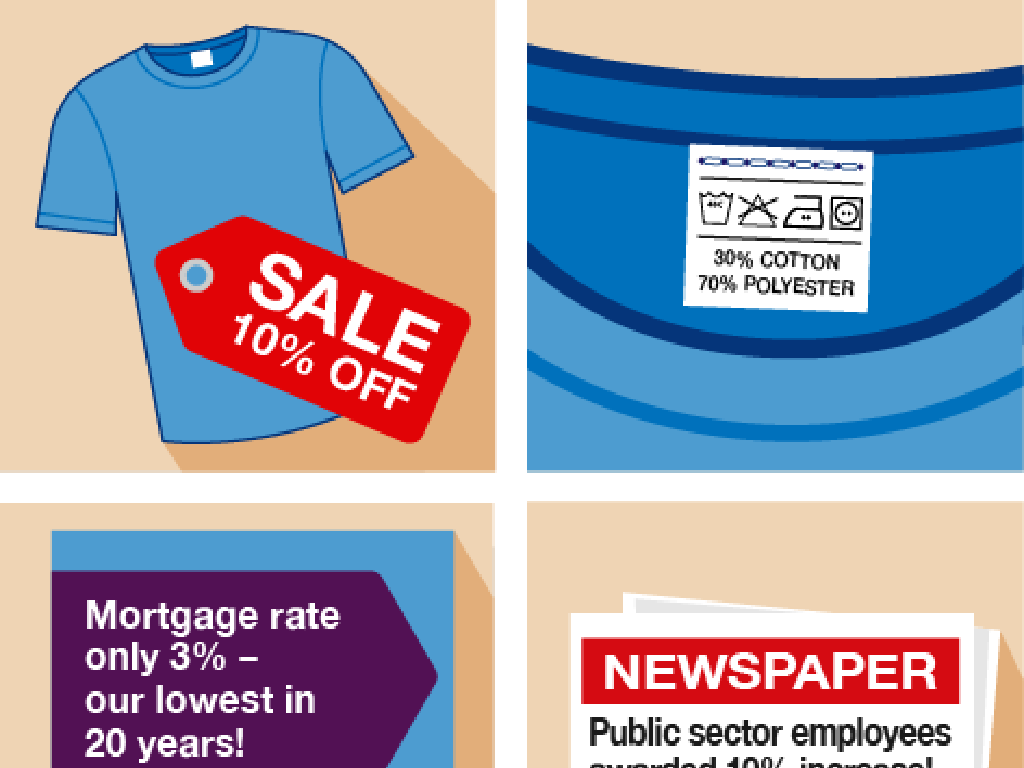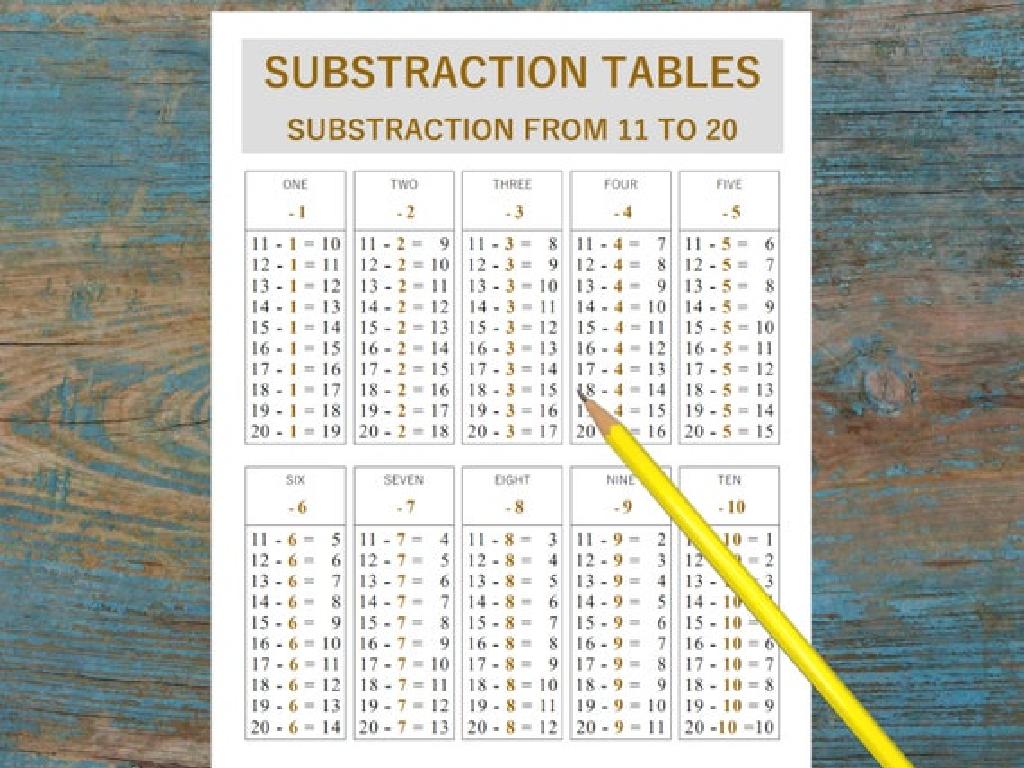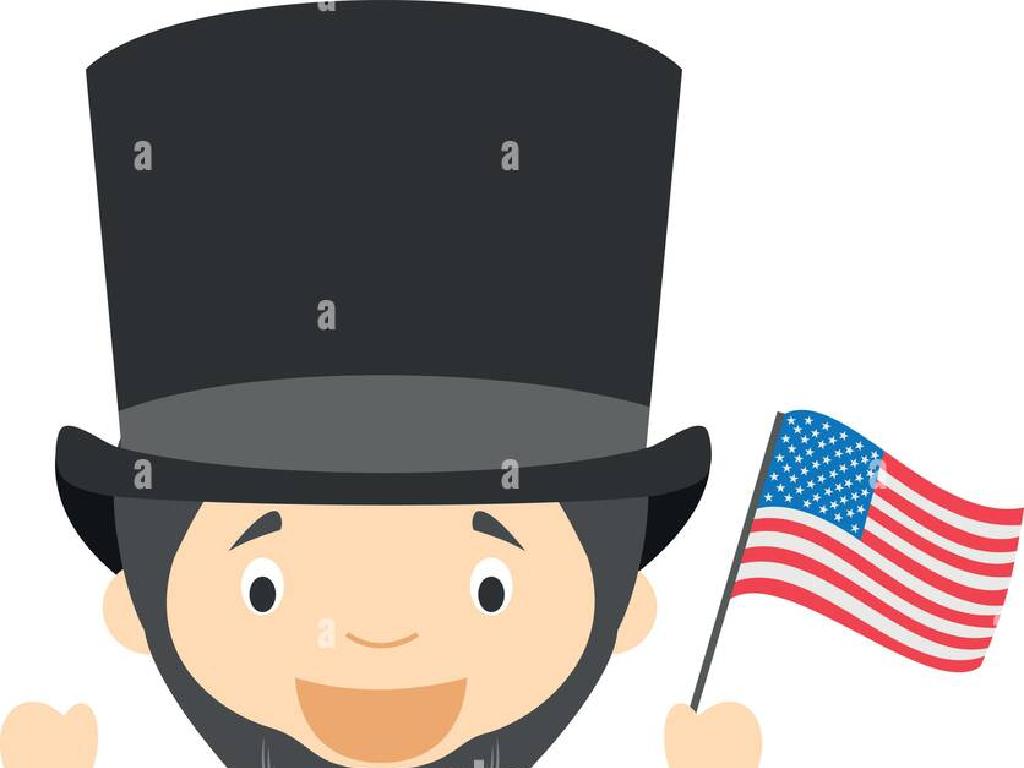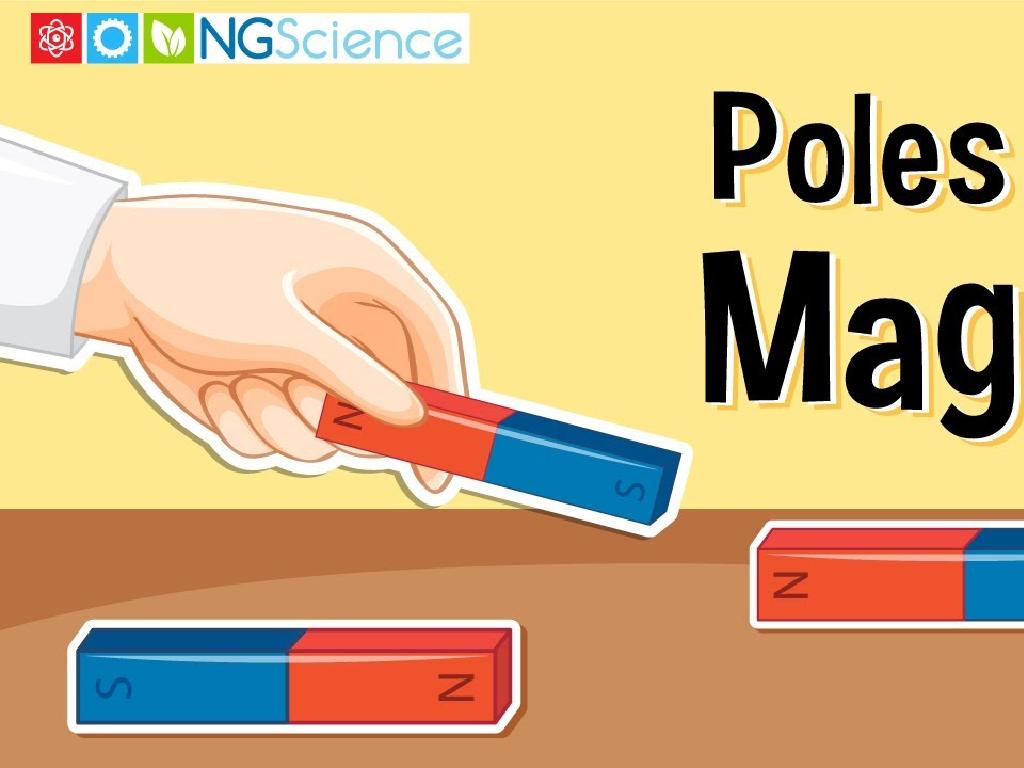Good, Better, Best, Bad, Worse, And Worst
Subject: Language arts
Grade: Seventh grade
Topic: Adjectives And Adverbs
Please LOG IN to download the presentation. Access is available to registered users only.
View More Content
Comparing with Adjectives and Adverbs
– ‘Good’ to ‘Best’: Understanding Degrees
– ‘Good, better, best’ show increasing positivity
– ‘Bad’ to ‘Worst’: Negative Comparisons
– ‘Bad, worse, worst’ indicate increasing negativity
– Why comparison is key in language
– To describe, clarify, and communicate effectively
– Examples in literature and speech
– ‘She ran fast, but he ran faster, and she ran the fastest.’
|
This slide introduces the concept of comparison using adjectives and adverbs, specifically focusing on the words ‘good, better, best’ and ‘bad, worse, worst.’ Students will learn how these words function to show varying degrees of quality or condition. The lesson will emphasize the importance of comparison in everyday language to express differences and preferences clearly. Use examples from familiar literature or common speech to illustrate how these comparative and superlative forms are used. Encourage students to think of their own examples and understand how these words can change the meaning of a sentence.
Exploring Adjectives and Adverbs
– Adjectives: Describing nouns
– Words that give more information about nouns, e.g., ‘quick’, ‘brown’ in ‘The quick brown fox’.
– Adverbs: Modifying actions and descriptions
– Words that change or qualify the meaning of a verb, adjective, or other adverbs, e.g., ‘quickly’ in ‘He ran quickly’.
– Identifying adjectives in sentences
– Find and highlight descriptive words in example sentences.
– Recognizing adverbs in use
– Look for words that tell us how, when, where, or to what extent an action is performed.
|
This slide introduces the basic concepts of adjectives and adverbs to seventh-grade students. Adjectives are words that describe or modify nouns, giving more detail about the object, person, place, or idea. Adverbs, on the other hand, modify verbs, adjectives, or other adverbs, often telling us how, when, where, or to what extent something is done. The slide encourages students to actively identify these parts of speech within example sentences. This will help them understand how adjectives and adverbs function within the context of a sentence. In the next class, students should be prepared to find examples of adjectives and adverbs in sentences from their reading or create their own sentences using these parts of speech.
Degrees of Comparison: From Good to Best
– Positive Degree: ‘good’, ‘bad’
– Basic form of adjectives to describe nouns
– Comparative Degree: ‘better’, ‘worse’
– Used to compare two things, showing which has more or less of the quality
– Superlative Degree: ‘best’, ‘worst’
– Used to compare three or more things, showing the highest degree of the quality
– Impact on sentence meaning
– These degrees intensify or reduce the quality of the nouns they describe
|
This slide introduces the concept of degrees of comparison in adjectives and adverbs. The positive degree is used when no comparison is made. The comparative degree is used to compare two items, people, or ideas, indicating a higher or lower degree of the quality. The superlative degree is used when comparing three or more items and indicates the highest degree. Understanding how to use these degrees correctly is crucial for students as it allows them to express comparisons and extremes effectively in their writing and speech. Provide examples of sentences using each degree to illustrate the change in meaning, such as ‘She is a good student,’ ‘She is a better student than her brother,’ and ‘She is the best student in her class.’
Comparative and Superlative Adjectives
– ‘Good’ with no comparison
– ‘Better’ for two comparisons
– ‘Cats are good pets, but dogs are better companions.’
– ‘Best’ for three or more
– ‘Out of all the pets, fish are the best for small apartments.’
– Sentence examples
– ‘This cake is good, but that one is better, and the chocolate one is the best!’
|
This slide introduces students to the use of the adjective ‘good’ and its comparative and superlative forms ‘better’ and ‘best.’ Begin by explaining that ‘good’ is used when there is no need to compare the quality of one thing to another. Then, discuss how ‘better’ is used when directly comparing two things to show that one has a superior quality over the other. Lastly, ‘best’ is used when comparing three or more things to indicate the highest quality among them. Provide sentence examples to illustrate the proper usage of each form. Encourage students to create their own sentences using ‘good,’ ‘better,’ and ‘best’ to reinforce their understanding.
Understanding Comparatives and Superlatives
– ‘Bad’ for no comparison
– ‘Worse’ for two comparisons
– ‘This apple is bad, but that one is worse.’
– ‘Worst’ for three or more
– ‘Out of all these apples, this one is the worst.’
– Sentence examples
– ‘The weather was bad yesterday. Today is worse, but tomorrow will be the worst.’
|
This slide aims to clarify the correct usage of the adjectives ‘bad,’ ‘worse,’ and ‘worst’ in the context of comparison. ‘Bad’ is used when there is no need to compare the quality of one thing to another. ‘Worse’ is used when directly comparing two things, indicating that one is inferior to the other. ‘Worst’ is used when comparing three or more things, identifying the one that is the least favorable or inferior. Provide students with clear examples in sentences to illustrate the proper usage. Encourage them to create their own sentences as practice to reinforce their understanding.
Irregular Comparatives and Superlatives
– ‘er’ and ‘est’ aren’t always used
– ‘Good, better, best’ are irregular
– ‘Good’ becomes ‘better’, not ‘gooder’, and ‘best’, not ‘goodest’
– ‘Bad, worse, worst’ also differ
– ‘Bad’ changes to ‘worse’, not ‘badder’, and ‘worst’, not ‘baddest’
– Practice with irregular adjectives
– Find and highlight these adjectives in sample sentences
|
This slide introduces students to irregular comparative and superlative forms of adjectives, which do not follow the typical ‘er’ and ‘est’ pattern. Highlight that ‘good’ transforms to ‘better’ and ‘best’, while ‘bad’ becomes ‘worse’ and ‘worst’. Encourage students to recognize these irregularities and understand that language has exceptions. Provide practice sentences for students to identify and use these irregular forms correctly. For example, ‘She did good on her test, but he did better, and their friend did the best.’ and ‘The weather was bad yesterday, worse today, and it’s expected to be the worst tomorrow.’ This exercise will help solidify their understanding of irregular adjectives in a practical context.
Activity Time: Crafting Sentences with Comparatives and Superlatives
– Create sentences with ‘good, better, best’
– Use each word in a unique sentence
– Formulate sentences with ‘bad, worse, worst’
– Show progression from ‘bad’ to ‘worst’
– Share your creative sentences
– Reflect on the use of each word
– Think about how the meaning changes with each word
|
This activity is designed to help students understand the use of comparative and superlative adjectives. ‘Good, better, best’ and ‘bad, worse, worst’ are common examples that show progression in quality. Students should create their own sentences to illustrate their understanding of these words in context. Encourage creativity and the use of diverse scenarios. After crafting their sentences, students will share them with the class to learn from each other’s examples. This will also foster a collaborative learning environment. As a teacher, be prepared to provide feedback and guide students on the correct usage of these adjectives. Possible activities could include peer review, creating a class chart of sentences, or even a friendly competition to come up with the most original sentences.
Class Activity: Comparative Skit
– Form groups for skit preparation
– Use ‘good, better, best, bad, worse, worst’
– Incorporate these words in dialogues
– Create scenarios with comparisons
– Show contrasting situations for effect
– Present skits to the class
|
This activity is designed to help students understand the use of comparative and superlative adjectives in a fun and interactive way. Divide the class into small groups and assign them to create short skits that include the words ‘good, better, best, bad, worse, and worst’. Each group should think of different scenarios where these words can be used effectively to compare things or people. Encourage creativity and the use of props if available. After preparation, each group will present their skit to the class. This will not only reinforce the concept of comparison but also enhance public speaking and teamwork skills. Possible scenarios could include comparing foods, movies, or even performances of tasks. Teachers should monitor the group’s progress and provide guidance as needed.
Lesson Review & Story Challenge
– Recap today’s key points
– Write a story for homework
– Craft a creative tale incorporating ‘good, better, best, bad, worse, worst’
– Use all six target words
– Ensure each word is used in context
– Share your story next class
|
As a review, reiterate the comparative and superlative forms of ‘good’ and ‘bad’ and their usage in sentences. For homework, students are tasked with writing a short story that includes ‘good, better, best, bad, worse, worst’ to demonstrate their understanding of these adjectives and adverbs in context. Encourage creativity and the use of descriptive scenarios that naturally incorporate these words. In the next class, provide an opportunity for students to share their stories, fostering a collaborative learning environment where they can learn from each other’s usage of language. Offer guidance on how to use these words to enhance their storytelling.






